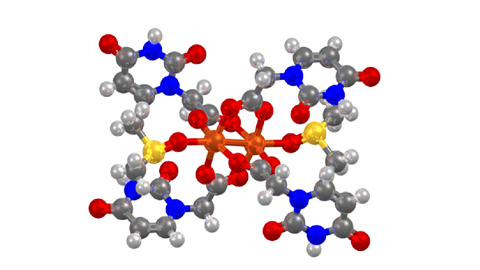A new, free online resource could help teachers introduce and illustrate to students the structural chemistry of course favourites.

A new, free online resource could help teachers introduce and illustrate to students the structural chemistry of course favourites such as graphite, diamond, ice, sodium chloride, C60 and quartz. Hosted on the University of Cambridge department of chemistry's website, the resource offers interactive images of 22 chemicals in the solid state.
Produced by Chas McCaw of Winchester College while on a term's sabbatical at the Cambridge department, the images are based on data provided by the department's crystallographic database facilities. 'These are not artists' impressions of crystal structures, they are the real thing', explains McCaw. The images are depicted using Jmol, an open-source software. The software allows the user to rotate and zoom in/out of the crystal structure image, rather like handling a real model. 'This gives great potential to show crystal properties that are hard to represent with non-interactive images, for example the helices running through quartz that make the structure optically active', says McCaw.
The resource is designed to support the teaching of the new Cambridge Pre-U course in chemistry, which emphasises three dimensional structure and its importance in chemistry.1 Each structure is divided into basic and advanced pages, the latter are intended to be interesting and challenging extension material for students. Alongside the images McCaw provides brief introductory notes on each chemical and some key points (eg geometry, symmetry, equivalence etc) of its lattice structure. The chemicals covered provide examples of the cubic crystal systems (body-centred cubic, cubic close-packed, hexagonal close-packed, simple cubic) and other non-cubic crystal systems - hexagonal, tetragonal, trigonal, triclinic, monoclinic and orthorhombic.
Suitable to use with interactive whiteboards, you will need to have Java software enabled on your computers to view the images.
Teachers are invited to send their comments on the resource or suggestions for chemical structures to be added to Chas McCaw (e-mail: cm520@cam.ac.uk).
Related Links
Chemistry Teaching at the University of Cambridge
Interactive crystal structures
References
- Educ. Chem, 2006, 43 (5), 116






No comments yet